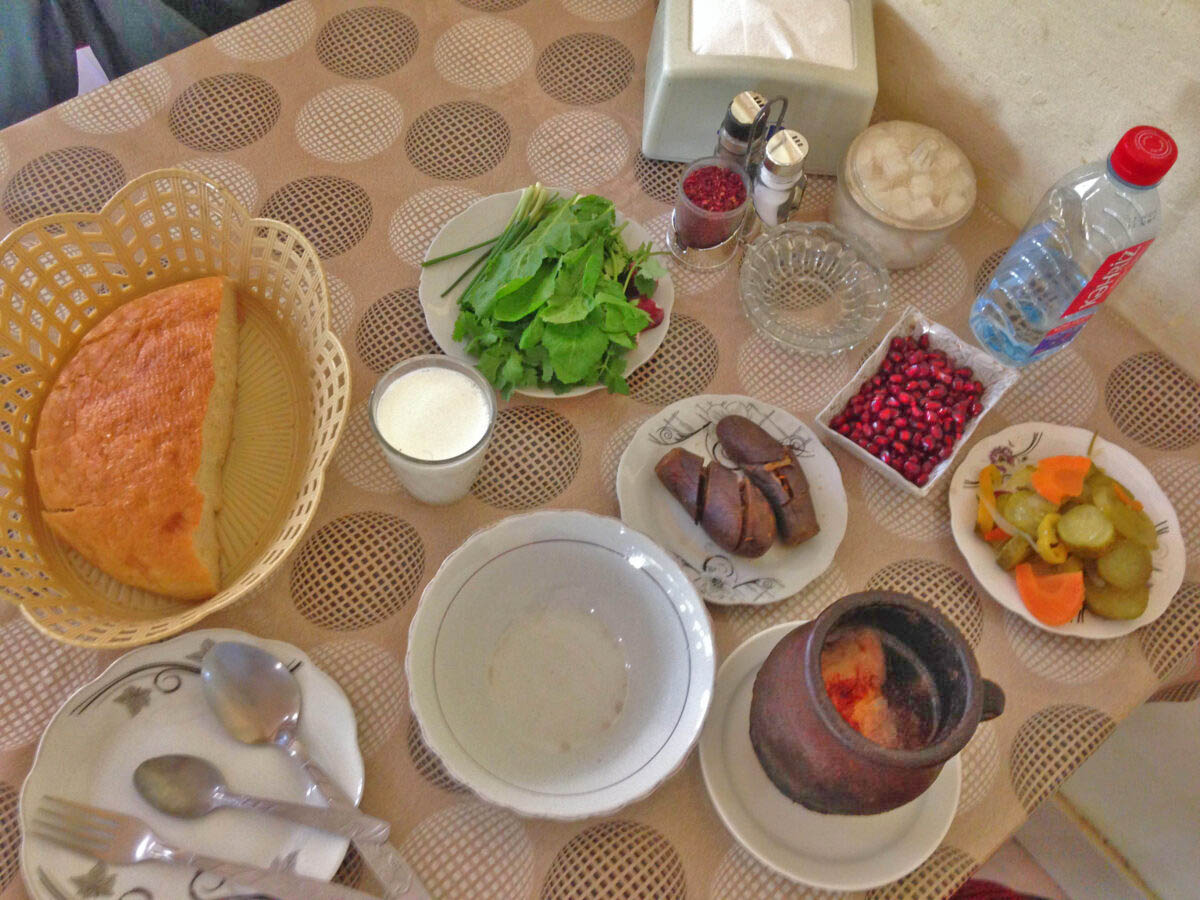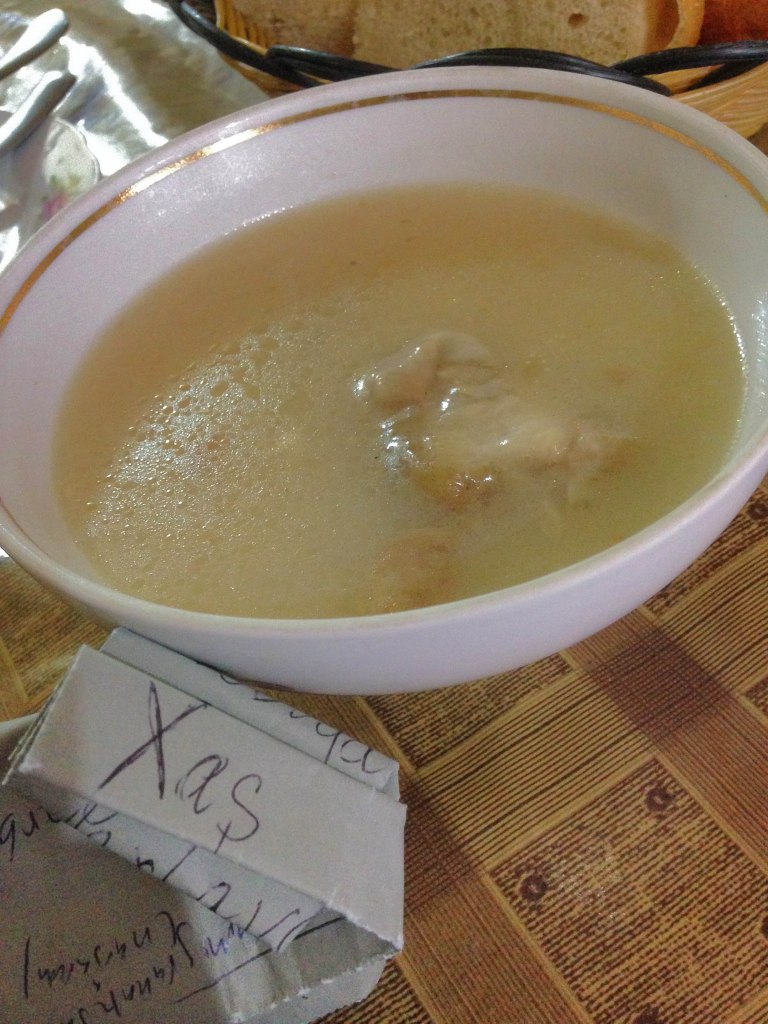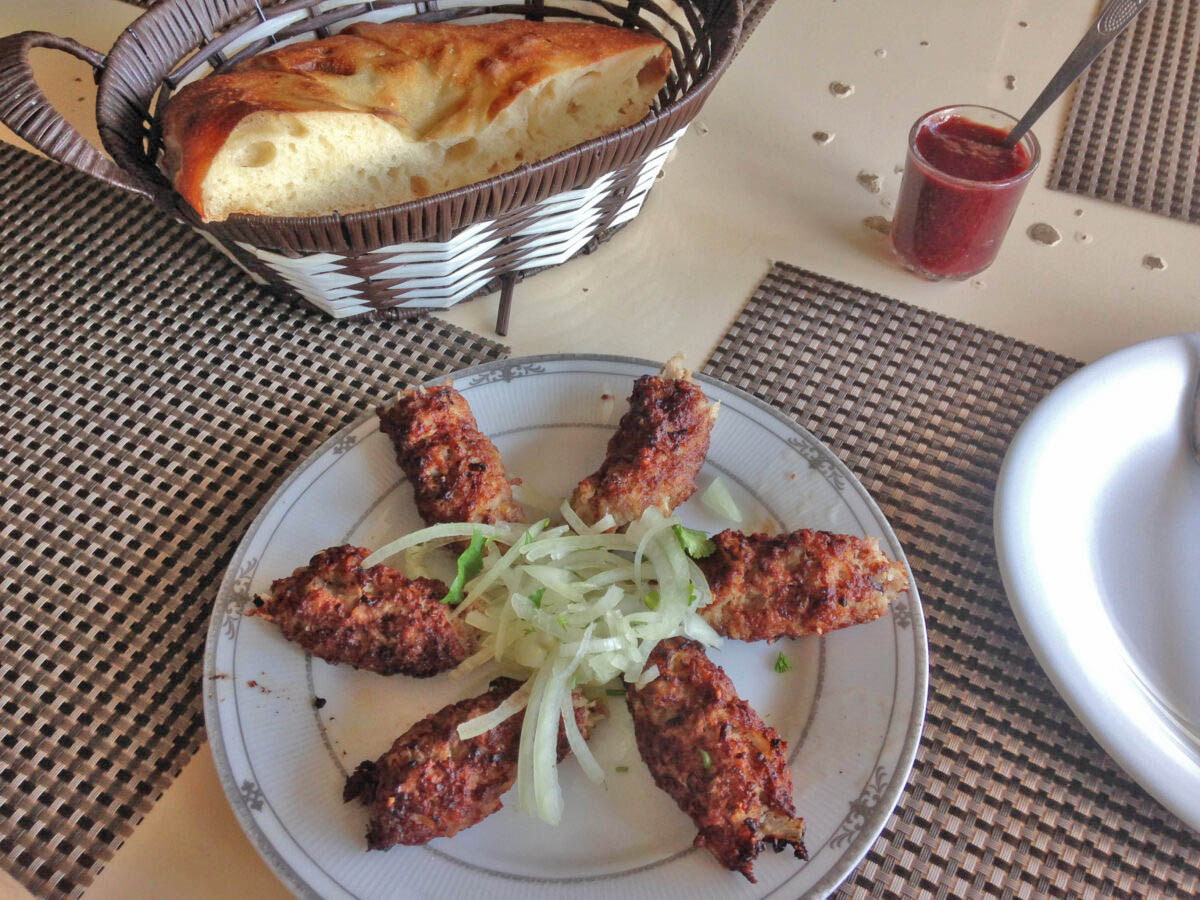In late 2016, I visited Baku, Azerbaijan (in Azeri, Bakı, Azərbaycan) after learning about the ease of getting a tourist visa if you were a passenger on Azerbaijan Airlines’ New York JFK-Baku GYD flight. With more time, I would have explored the vast biodiversity of the country; however, this short trip was focused on Baku, the Azerbaijani capital, and a few regional historical landmarks.
As such, today’s post will be centered on a few meals that I tried while in Baku. With food heavily influenced by Turkish and Iranian cuisines – as well as Russian cuisine – I had high hopes for the Caspian Sea metropolis. Nuş Olsun (Bon Appétit)!
Having done no prior food and drink research about Baku, I decided to rely on the local knowledge of the Azerbaijan Airlines flight attendants; their suggestions were written below, on a less than flattering in-flight sickness bag.

While paying homage to the FAs’ recommendations, the first thing that I ate in Baku was a quince. Most commonly consumed as a fruit spread, quinces are quite popular in the Caucasus region. I think quince jams and paste go great with manchego and melba toast, but take my word for it, a raw quince is astringent, awkwardly crunchy, and thus no bueno.

After a day trip to a couple of cool places – I will get into them at a later time – my shady taxi driver dropped me off at this restaurant, ostensibly managed by his “friend.” Nevertheless, it was a good intro to Azerbaijani food, replete with delicious pomegranate, pickled eggplant, local non-spicy giardiniera, somewhat bland bread (more on this in a moment), raw greens, ayran – a mix of yoghurt, water, and salt – and piti.
Piti, a soup made with a base of chickpeas, lamb, and chestnuts, comes from the northwestern town of Sheki. It is always served in an earthenware pot, and can even include quince, cherries, and other items, depending on the season.
About half-way through eating the piti, a waiter came by to demonstrate that I was eating it wrong. You are supposed to rip up the bread, place it in the bowl, and then pour the piti on it. The pickles (and onions, which I had already eaten by this time) are a traditional accompaniment, as is the floral yet subtle sumac to sprinkle on top. When eaten correctly, it all comes together so much better~

Xaş (khash) … here’s where we get into the thick of things. Originally a cheap meal for farmers, and found as far away as Mongolia and Greece, khash is a stew made of tendons in cow and/or sheep feet. In Georgia, Armenia, and Azerbaijan, it’s generally eaten in the winter, and is amusingly eaten to overcome hangovers.
It was extremely oily, heavy without any pleasant flavor, and ultimately not something I’d want to eat again.

Now we’re talking! Lyulya kebabs, made of minced lamb, onion and plenty of salt, served with more onion, delightfully chewy bread, and narsharab, an Azeri condiment made of sweet and sour pomegranates. Pomegranates are known as the king of fruit in Azerbaijan, where more than 200 varieties of the vermilion fruit are grown. Even some dishes are made with pomegranates and eggs…I’m curious about this one.
Just don’t throw that bread out. It’s rude.

What better way to finish off a brief tour of Azerbaijani food than with paxlava, also known as bakhlava? The intricately designed paxlava on the top left is called şəkərbura (roughly, shekerbura), and is filled with walnuts and sugar. On the bottom, tenbel paxlava, or lazy paxlava, made with ground walnuts, sugar, and a sweet syrup.
—
If you want to read more about Azerbaijani cuisine, check out this article.

Leave a Reply